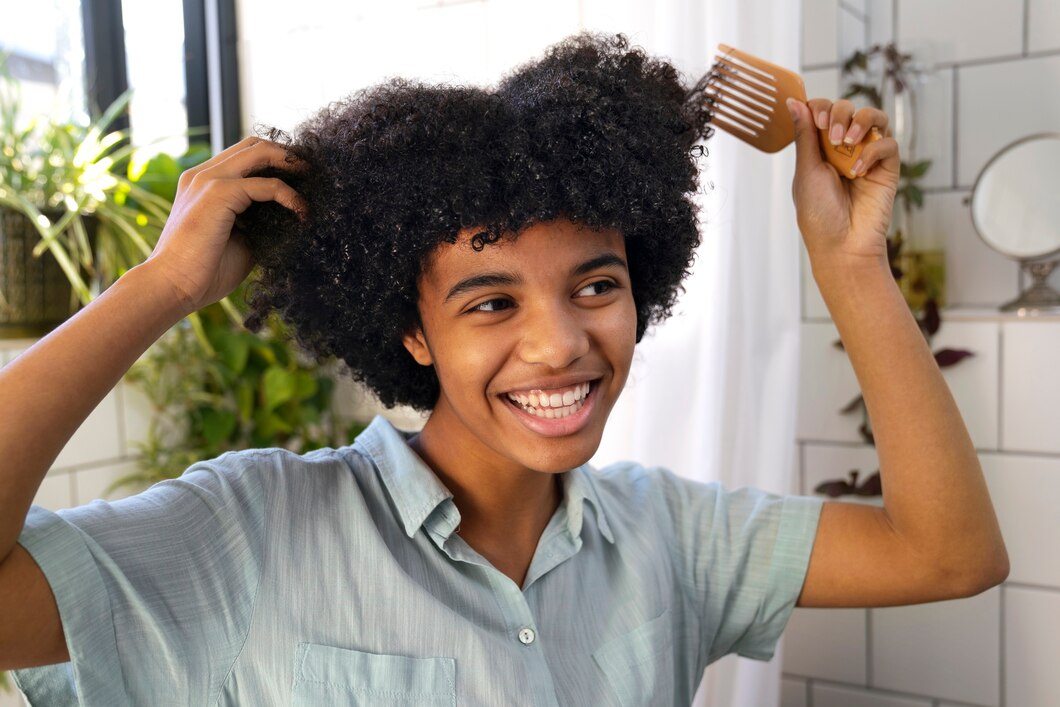For many, the daily battle with tangled hair is a frustrating ritual. Knots and tangles can lead to breakage, pain, and an overall sense of defeat. However, detangling doesn’t have to be a dreaded chore. With the right techniques and tools, you can transform this task into a gentle, effective, and even enjoyable part of your hair care routine. Here’s a comprehensive guide to mastering the art of detangling for happy, healthy hair.
Understanding the Causes of Tangles
Before diving into techniques, it’s important to understand why hair tangles in the first place. Several factors contribute to knots:
- Hair Texture: Curly and wavy hair types are more prone to tangling due to their natural coil and structure.
- Length and Thickness: Longer and thicker hair tends to tangle more easily.
- Dryness and Damage: Dry or damaged hair is more susceptible to tangling because rough cuticles catch on each other.
- Improper Washing and Drying: Rubbing hair vigorously with a towel or not conditioning properly can lead to tangles.
- Environmental Factors: Wind, humidity, and even sleeping on certain fabrics can contribute to tangled hair.
Gentle Detangling Techniques
- Pre-Detangle Before Washing: Detangling your hair before washing can significantly reduce knots. Use a wide-tooth comb or your fingers to gently separate strands, starting from the ends and working your way up to the roots.
- Condition and Hydrate: Always use a good quality conditioner after shampooing. Conditioning helps to smooth the hair cuticles, making it easier to detangle. For extra hydration, consider using a leave-in conditioner or detangling spray.
- Use the Right Tools: Invest in tools designed for detangling. Wide-tooth combs, detangling brushes, and fingers are all excellent choices. Avoid fine-tooth combs and brushes with harsh bristles, as these can cause breakage.
- Start from the Ends: When detangling, always start at the ends of your hair and work your way up. This method prevents pulling and reduces the risk of breakage.
- Work in Sections: Divide your hair into manageable sections and detangle each one separately. This approach ensures that you can focus on small areas at a time, making the process more efficient and less overwhelming.
- Be Gentle and Patient: Detangling requires patience. Use slow, gentle motions to work through knots. If you encounter a particularly stubborn tangle, apply a bit more conditioner or detangling spray and gently work it out with your fingers.
- Use Oil or Serum: Applying a lightweight oil or serum can provide extra slip, making it easier to detangle hair without causing breakage. Oils like argan, jojoba, or coconut are excellent choices.
Preventing Tangles
- Regular Trims: Keep your hair trimmed regularly to prevent split ends, which can lead to tangling.
- Protective Hairstyles: Wearing protective hairstyles, such as braids or buns, can help prevent tangles, especially while sleeping or during physical activity.
- Silk or Satin Pillowcases: Sleeping on silk or satin pillowcases reduces friction, which helps prevent tangling overnight.
- Moisturize Regularly: Keep your hair moisturized with regular deep conditioning treatments and hydrating products to maintain smooth, tangle-free hair.
Detangling for Different Hair Types
- Straight Hair: For straight hair, detangling is typically easier. Use a lightweight conditioner and a wide-tooth comb or paddle brush to gently work through any knots.
- Wavy Hair: Wavy hair benefits from a leave-in conditioner or detangling spray. Finger detangling or using a wide-tooth comb while hair is wet works best.
- Curly Hair: Curly hair often requires more moisture. Apply a rich conditioner or deep conditioning mask, and detangle with fingers or a wide-tooth comb while the hair is saturated with product.
- Coily and Kinky Hair: For coily and kinky hair, use a generous amount of conditioner or a detangling cream. Section the hair and use your fingers or a wide-tooth comb to carefully detangle from ends to roots.
Detangling doesn’t have to be a painful or frustrating experience. With the right techniques, tools, and a bit of patience, you can achieve smooth, happy hair that’s free from knots and tangles. Embrace these gentle methods to transform your detangling routine into a nurturing part of your hair care regimen, ensuring your hair remains healthy, shiny, and full of life.








